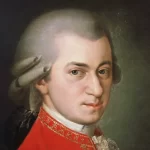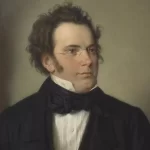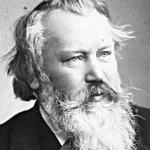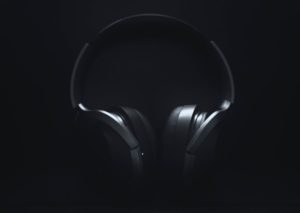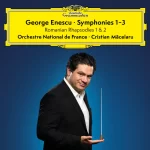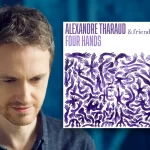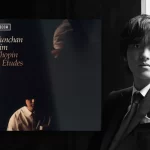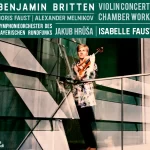Robert Schumann (1810-1856) is universally considered among the most important figures in the art world of the first half of the 19th century, and one of the more notable composers of the early German romantic period. Schumann, as many of the talented musicians of his day, pursued a career of a pianist-composer, which was cut short due to a hand injury. He continued composing for the piano for the rest of his career alongside other genres, with the advice of his companion and later wife, Clara, daughter of his piano teacher, Friedrich Wieck.
Contrary to his contemporary Chopin, Schumann managed to make a greater advantage towards the chamber, orchestral and concerto genres which do not include the piano singularly or as a participant. He began his composition career mainly as a piano composer, but then concentrated, on separate stretches of time, on a specific genre, such as the song, chamber and orchestral music.
Schumann contribution to classical music is significant not only as a composer, but also as a critic and mentor of many of his younger contemporaries such as Brahms and Berlioz. As a critic, he edited and wrote in the “Neue Zeitschrift für Musik”, where he introduced a unique kind of criticism: Two “alter egos” of the critic (Schumann himself), giving two opposite opinion on a certain subject or musical piece. These alter egos, named Eusebius and Florestan, are also represented on many of Schumann piano music, marking to the performer the opposite character of certain movements. He also encouraged the revival of past-day composers from the Baroque and Classical eras, while giving others, more experimental composer of his day such as Richard Wagner, a more hesitant treatment.
Schumann suffered from symptoms of mental illness for most of his adult life, and he eventually succumbed to them in 1854, dying in ”an asylum for the insane” in 1856.
Here are 10 pieces which represent a good place to start if one wants to get familiar with Schumann’s music. Our recordings recommendations are also intended for the beginner listener and represent the best version listeners can get familiar with the piece. Don’t forget to subscribe to our classical music newsletter and be notified for more guides, new classical music album reviews and news.
Symphonies and Concertos
Schumann came to write for a full symphonic orchestra rather late in his career, after establishing himself as a prominent piano and song composer, as well as of a significant music critic. Part of his orchestration efforts was criticized and attempted to improve upon, especially by great conductors, most notably Gustav Mahler and George Szell. It is still debatable whether a good Symphony performance by Schumann is calling for a talented enough conductor and ensemble, or requires supplements to the original writing. Our recommendations are for performances that proved magnificent without any changes to the original text of the composer.
As for Concertos for soloist and orchestra, Schumann wrote one concerto for each of the three popular solo instruments – Piano, Violin and Cello. The Piano and Cello concertos are the ones performed widely and considered a pinnacle of the repertoire for their instrument.
Symphony No. 1, Op. 38
The so-called “Spring Symphony” is Schumann’s first mature attempt of full Symphony (he attempted it previously in his youth). The composer was lucky enough to have the guidance and support of friends and colleagues such as his precious Clara and Felix Mendelssohn when composing the piece, with the latter conducting the first performance to critical acclaim. The final result is a big scale, full-hearted Symphony with a high level of emotionally intense, rhythmically alert fast movements and serene atmosphere in the second movement.
John Eliot Gardiner was one of the first conductors to deploy original instruments from Schumann’s lifetime into performance practices, but his performance is not only revelatory – it’s also one of the most exciting on record.
Symphony No. 3, Op. 97 (“Rhenish”)
Schumann’s greatest contribution to the Symphony repertoire is the Third Symphony, also known as “the Rhenish”, supposedly influenced by travels the composer took to this piece of land years earlier.
The Symphony is sweeping with energy from the first bar, and keeps the tension high on all of its 5 movements. It includes some marvelous roles for each section of the orchestra, such as in the second movement episodes for the brass and woodwind, and the “choral” episode in the fourth, “Cathedral” movement.
Due to its importance and popularity, the Third Symphony was recorded numerous times by practically all of the best orchestras and conductors. Choosing one version, as always, is a matter of taste, but few listeners will be disappointed with Rafael Kubelik’s version of this wonderful Symphony from the late 1970s, now part of a box-set by Sony.
Piano Concerto, Op. 54
First conceived as a single movement fantasy, the Piano Concerto became the 3 movement masterpiece we came to know today after years of development. It is without a doubt one of the most loved and often played Piano Concertos in the classical music literature in general and from the romantic period in particular. The original first movement is based on a single theme that goes from the major to minor with ingenues changes of moods until the sparkling coda by the pianist. The lovely, middle “scherzo” gives the orchestra the main themes while the soloist acts as an accompanist, more inlined with chamber music-making than a full concerto with large orchestra. When it comes to the final movement, it’s gracious in character but the pianist is given a challenging part indeed, another demonstration what a fabulous pianist Clara Schumann must have been – She gave the debut and performed this piece throughout her long life.
Murray Perahia is one of the greatest Schumann interpreters of our generation, and he gives here an almost ideal account of this elusive concerto, together with a marvelous playing by the Berlin Philharmonic Orchestra and their-then music director Claudio Abbado. The performance is available today as part of a box set by Sony, with superb performances of other piano pieces by Schumann.
Cello Concerto, Op. 129
These days, Schumann’s Cello Concerto is considered one of the most popular concertos written for the instrument, but it had a rocky start. Similarly to the Piano Concerto, it was conceived more as a “fantasy” than a proper three-movement concerto, and compared with other middle 19th-century cello concertos, it is less preoccupied with virtuosity display of the soloist than with the musical statement and dialogue with the orchestra. The orchestration so also not ideal, with some misjudgments of the balance of sections of the ensemble and their accompaniment of the cello. Nonetheless, it’s a moving, highly effective piece may be due to these slight weaknesses, making it sound more humane and vulnerable. After a short, two bars introduction, the cello stars his musical phrases which seem to go on continuously from start to finish, making the listener drawn to the music.
A recent addition to the catalog, Sol Gabetta presents a “historically aware” approach in instruments and spirit to the piece, with first class support from the Kammerorchester Basel and Giovanni Antonini, in a spectacular recording sound. A more traditional approach made by Mischa Maisky with the Vienna Philharmonic Orchestra under Leonard Bernstein can be found in many formats and additions, including video.
Manfred Overture, Op. 115
One of the composer’s late Symphonic efforts, the incidental music for “Manfred”, based on a poem by Lord Byron, is also considered by many to be his best composition for large orchestra. The overture, the only portion of the music performed today, draws the listener right from the start, and although containing many music ideas remains remarkably coherent, with soloists and different groups of the orchestra receiving equal opportunity to shine.
The Manfred Overture is added to many albums containing larger Symphonies or concertos by Schumann or other composers, and indeed the Kubelik package above includes an impressive account of this piece as well. But if you are on the lookout for a marvelous account of this overture in its own right, then Carlo Maria Giulini’s version with the LA Philharmonic is one of the best – full of warmth and wisdom, well recorded and enthralling from beginning to end.
Piano Quintet in E Flat Major, Op. 44
One of the best piano quintets in the history of classical music, this can also be considered as Schumann’s best chamber work. From a sonority standpoint, it’s built as a blend between a “chamber piano concerto” and a truly collaborative work of all players, with the piano prominent but also taking an accompanying role to the strings. After a high spirited first movement, the second movement, a slow, reflective march, is chilling. The contrasts of this work continue with the two additional movements and indeed, it is a multicolored yet tightly organized work, that requires the utmost control of all participants.
Menaham Pressler and the Emerson Quartet give an animated account that still preserves control and human warmth. With an addition of a well-executed version of the piano quartet, it’s one of the best performances of this much-recorded piece.
Piano Music
Schumann was one of the greatest contributors to the piano literature of the romantic period, and his masterpieces for the instrument are too many to count. Cycles of short movements such as the Carnaval, Davidsbündlertänze, Fantasiestücke, Symphonic Studies, Kreisleriana, Kinderszenen and others are uniquely written to the instrument, making it sound like no other. The entirety of Schumann’s piano music has been recorded by a few pianists, but Eric Le Sage’s set on Alpha Classics is the most consistent and satisfying. We chose three piano pieces we think will make a good gateway to Schumann’s piano music – The Carnaval, Fantasied in C and Kinderszenen.
Carnaval, Op. 9
A unique piece of 21 miniatures connected by 4 notes motif. This simple musicological title does not do justice to this multifaceted piano piece, which requires from the performer a huge range of emotional diversity, ability to represent different characters of each piece and to take hold of the enormous technical demand of the cycle. The 21 short movements include representation of characters from literature, real life, and as always, from the composer’s own imagination (Eusebius and Florestan are making an appearance). It’s a joy from start to finish, and somehow, through the connected motifs, never sounds segmented in the right hands.
There are 3 legendary recordings of the Carnaval, a piece so hard to pull off that only a handful of pianists really reached heights with. The first is by Sergei Rachmaninov, available as a package with all of his recordings as a pianist and conductor (recommended), or as a Naxos CD which contains the Carnaval with another legendary performance – Chopin’s second piano sonata.
Another two great Carnaval interpreters include pianists Arthur Rubinstein (especially in his second, 1960’s recording) and Geza Anda, on studio and live performances of which are available on few labels. Unfortunately, these three recordings are not readily available for an online purchase on Amazon, but can be streamed on Apple Classical. If you feel you must have a digital performance, Marc-André Hamelin latest version for Hyperion is a terrific performance.
Fantasie in C, Op. 17
The great Fantasie in C, dedicated to Frantz Liszt, was originally conceived as a single movement and, much like the Piano Concerto, was joined by two additional movements. Schumann tried to use the Fantasie’s publication as a partial contribution to a new monument to Beethoven, to be built in Bonn. It therefore includes a small quotation from a Beethoven song at the end of the first movement.
The entire piece is showing Schumann at his most advanced piano composer, and it remains one of the most large-scaled, uniquely constructed and difficult piano pieces of the 19th century.
The Fantasie Op. 17 is one of the pieces most susceptible to pianists interpretation, and in some cases it sounds very different when heard by different pianists side-by-side.
Maurizio Pollini’s analog 1970s version is still remarkable, and a good starting point of getting to know this elusive piece. At first, it appears he is attacking the music, but many subtleties emerge with continuous listening. Other versions of remarkable pianists who recorded the fantasie are a bit hard to come by in physical form, but are all available on streaming services – most notably Sviatoslav Richter and Leif Ove Andsnes. Murray Perahia’s also impressive version is mentioned above, in his Sony box. For those who insist on a digital version, Paul Lewis’ version for Harmonia Mundi is superb.
Kinderszenen, Op. 15
The Kinderszenen (“Scenes from childhood”) is a cycle of 13 short piano pieces, each representing a scene, titled at the beginning of the movement. And indeed, the musical representation of a real-life scene is the real achievement of this cycle. The middle movement, “Traumerei” (“Daydreaming”) is one of Schumann’s more famous piano pieces (and one of the most famous piano pieces of all time).
Radu Lupu brings his best to this piece in a Wonderfull Schumann recital album from Decca, combining the almost impossible contradictory of sophistication and innocence at the heart of this cycle.
Dichterliebe, Op. 48
Schumann spent most of 1840 concentrating on composing songs (“lieder”), and among the composer’s scholars 1840 is referred to as “the year of the song”. From almost 150 songs composed that year, the “Dichterliebe” (“A Poet’s Love”) is the most significant, and Schumann’s most important contribution to the genre. Based on poems by Heinrich Heine, the cycle contains 16 songs dealing with love, loss and nature. Although not performed in its entirety until 1895, the cycle was most likely conceived as a single unit, as in many of Schumann’s other cycles comprised of short pieces. This makes listening to the complete song cycle a highly rewarding experience, going through diverse moods and musical ideas. This song cycle now stands at the heart of the repertoire, alongside the most important German lieder by Schubert.
There may be more sophisticated singers and accompanists in the vast catalog of performances of the “Dichterliebe”, but very few share the charm, heartfelt simplicity and beauty of tone of Fritz Wunderlich’s classic Deutsche Grammophon version, with pianist Hubert Giesen. The early 1960s recording still sounds remarkably fresh and helps enjoy the baritone’s supreme diction.

This concludes our beginners guide to Schumann. Visit our Beginners Guides to classical music page and get to know more classical music composers. Sign up to our newsletter to get updated on new guides when they are published.
Included with an Apple Music subscription:
Latest Classical Music Posts
- Review: The Vienna Recital – Yuja Wang, Piano
- Editor’s Choice: The Best New Classical Music Albums, May 2024
- Review: Enescu – Symphonies Nos. 1-3 & 2 Romanian Rhapsodies – Cristian Mǎcelaru
- Review: “Four Hands” – Alexandre Tharaud
- Review: Chopin – Études – Yunchan Lim
- Review: Britten – Violin Concerto, Chamber Works – Isabelle Faust
Read more classical music reviews or visit The Classic Review Amazon store
Follow Us and Comment:
Get our periodic classical music newsletter with our recent reviews, news and beginners guides.
We respect your privacy.


